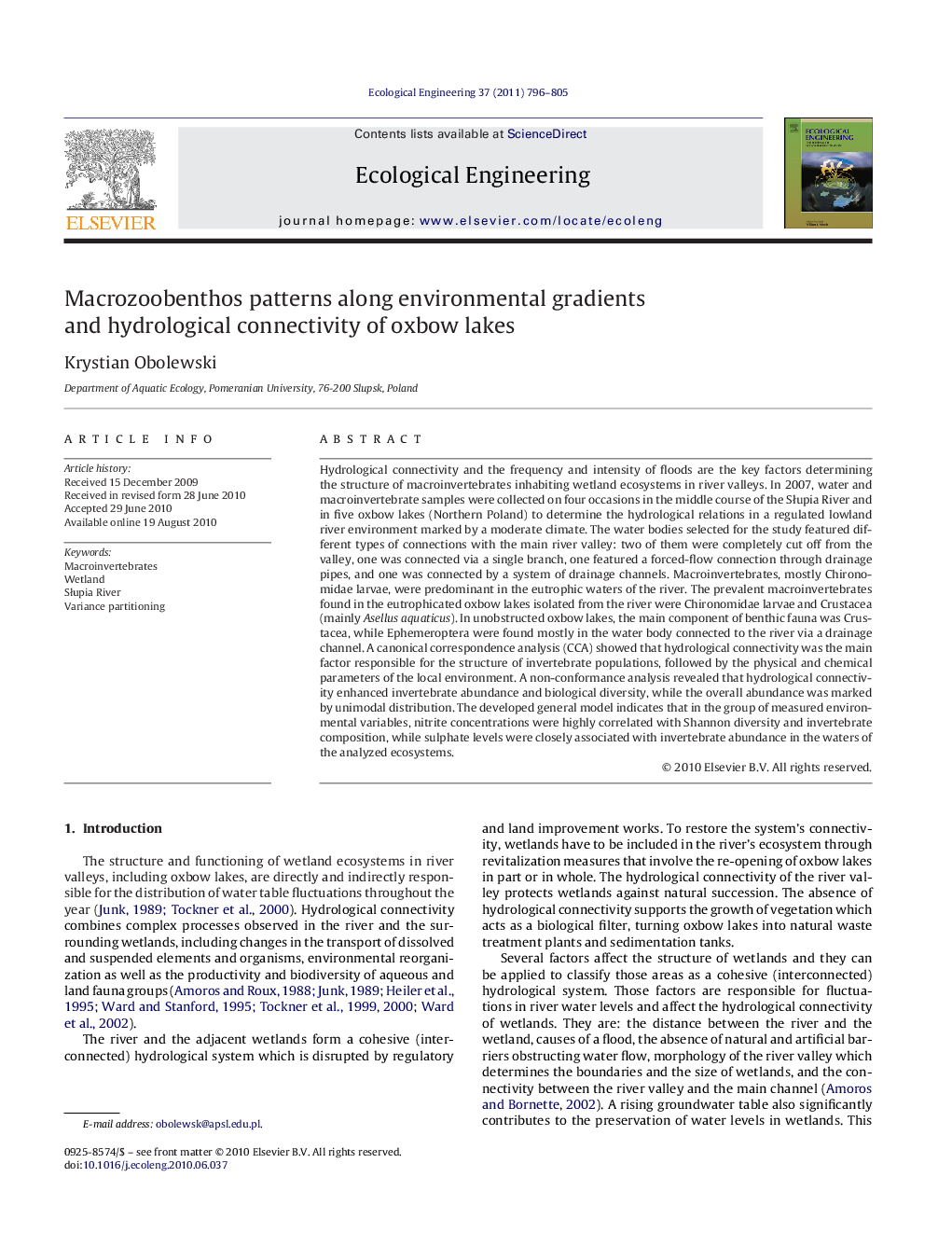| Article ID | Journal | Published Year | Pages | File Type |
|---|---|---|---|---|
| 4390198 | Ecological Engineering | 2011 | 10 Pages |
Hydrological connectivity and the frequency and intensity of floods are the key factors determining the structure of macroinvertebrates inhabiting wetland ecosystems in river valleys. In 2007, water and macroinvertebrate samples were collected on four occasions in the middle course of the Słupia River and in five oxbow lakes (Northern Poland) to determine the hydrological relations in a regulated lowland river environment marked by a moderate climate. The water bodies selected for the study featured different types of connections with the main river valley: two of them were completely cut off from the valley, one was connected via a single branch, one featured a forced-flow connection through drainage pipes, and one was connected by a system of drainage channels. Macroinvertebrates, mostly Chironomidae larvae, were predominant in the eutrophic waters of the river. The prevalent macroinvertebrates found in the eutrophicated oxbow lakes isolated from the river were Chironomidae larvae and Crustacea (mainly Asellus aquaticus). In unobstructed oxbow lakes, the main component of benthic fauna was Crustacea, while Ephemeroptera were found mostly in the water body connected to the river via a drainage channel. A canonical correspondence analysis (CCA) showed that hydrological connectivity was the main factor responsible for the structure of invertebrate populations, followed by the physical and chemical parameters of the local environment. A non-conformance analysis revealed that hydrological connectivity enhanced invertebrate abundance and biological diversity, while the overall abundance was marked by unimodal distribution. The developed general model indicates that in the group of measured environmental variables, nitrite concentrations were highly correlated with Shannon diversity and invertebrate composition, while sulphate levels were closely associated with invertebrate abundance in the waters of the analyzed ecosystems.
